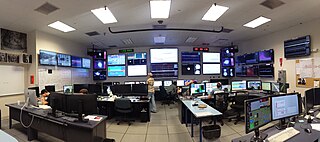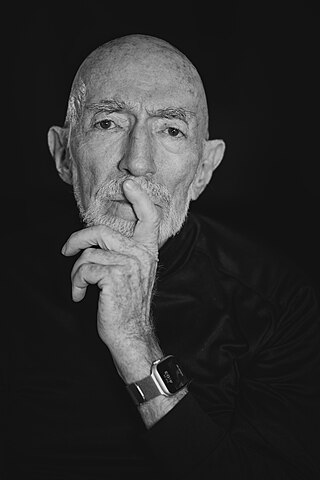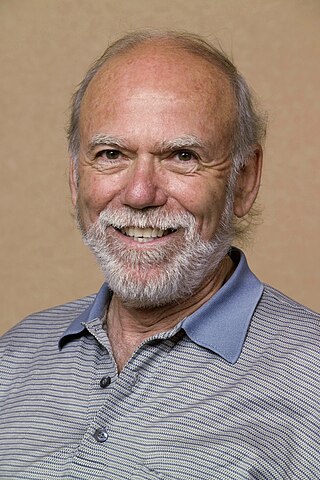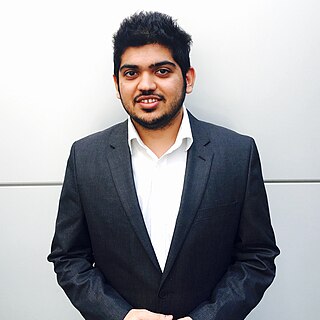Related Research Articles

The Laser Interferometer Gravitational-Wave Observatory (LIGO) is a large-scale physics experiment and observatory designed to detect cosmic gravitational waves and to develop gravitational-wave observations as an astronomical tool. Two large observatories were built in the United States with the aim of detecting gravitational waves by laser interferometry. These observatories use mirrors spaced four kilometers apart which are capable of detecting a change of less than one ten-thousandth the charge diameter of a proton.

Kip Stephen Thorne is an American theoretical physicist known for his contributions in gravitational physics and astrophysics.

Rainer "Rai" Weiss is a German-born American physicist, known for his contributions in gravitational physics and astrophysics. He is a professor of physics emeritus at MIT and an adjunct professor at LSU. He is best known for inventing the laser interferometric technique which is the basic operation of LIGO. He was Chair of the COBE Science Working Group.

The Max Planck Institute for Gravitational Physics is a Max Planck Institute whose research is aimed at investigating Einstein's theory of relativity and beyond: Mathematics, quantum gravity, astrophysical relativity, and gravitational-wave astronomy. The institute was founded in 1995 and is located in the Potsdam Science Park in Golm, Potsdam and in Hannover where it closely collaborates with the Leibniz University Hannover. Both the Potsdam and the Hannover parts of the institute are organized in three research departments and host a number of independent research groups.

Ronald William Prest Drever was a Scottish experimental physicist. He was a professor emeritus at the California Institute of Technology, co-founded the LIGO project, and was a co-inventor of the Pound–Drever–Hall technique for laser stabilisation, as well as the Hughes–Drever experiment. This work was instrumental in the first detection of gravitational waves in September 2015.
INDIGO or IndIGO is a consortium of Indian gravitational-wave physicists. It is an initiative to set up advanced experimental facilities for a multi-institutional observatory project in gravitational-wave astronomy to be located near Aundha Nagnath, Hingoli District, Maharashtra, India. Predicted date of commission is in 2030.

Barry Clark Barish is an American experimental physicist and Nobel Laureate. He is a Linde Professor of Physics, emeritus at California Institute of Technology and a leading expert on gravitational waves.

Gabriela Ines González, is a professor of physics and astronomy at the Louisiana State University and was the spokesperson for the LIGO Scientific Collaboration from March 2011 until March 2017.

Vassiliki Kalogera is a Greek astrophysicist. She is a professor at Northwestern University and the Director of the Center for Interdisciplinary Exploration and Research in Astrophysics (CIERA). She is a leading member of the LIGO Collaboration that observed gravitational waves in 2015.
Marica Branchesi is an Italian astrophysicist. Her leadership and scientific work was pivotal for Virgo/LIGO's discovery of gravitational waves. She is vice president of International Astronomical Union Gravitational Wave Astrophysics Commission and member of the Gravitational Wave International Committee.

Chiara Mingarelli is an Italian-Canadian astrophysicist who researches gravitational waves. She is an assistant professor of physics at Yale University since 2023, and previously an assistant professor at the University of Connecticut (2020–2023). She is also a science writer and communicator.
Peter Shawhan is an American physicist. He is currently professor of physics at the University of Maryland and was a co-recipient of the Breakthrough Prize in Fundamental Physics, the Gruber Prize in Cosmology, and the Bruno Rossi Prize for his work on LIGO.

Karan Jani is an Indian astrophysicist working on black holes, gravitational waves, and testing Albert Einstein's General Theory of Relativity. He is currently an assistant professor of physics and astronomy at Vanderbilt University, and holds the endowed position of Cornelius Vanderbilt Dean’s Faculty Fellow. He has worked at the LIGO Livingston Observatory in the US, the Albert Einstein Institute in Germany, the Georgia Institute of Technology, and the Perimeter Institute for Theoretical Physics in Canada. He is a member of the Indian Initiative in Gravitational-wave Observations effort to build a gravitational wave detector LIGO in India.
Norna Robertson is a lead scientist at LIGO at California Institute of Technology, and professor of experimental physics at the University of Glasgow. Her career has focused on experimental research into suspension systems and instrumentation to achieve the detection of gravitational waves.
Stanley Ernest Whitcomb is an American physicist and was the chief scientist at the Laser Interferometer Gravitational-Wave Observatory (LIGO) project when the first direct detection of gravitational waves was made in September 2015.
Susan Marjorie Scott is an Australian mathematical physicist whose work concerns general relativity, gravitational singularities, and black holes. She is a Professor of Theoretical Physics at the Australian National University (ANU).
Jocelyn Samantha Read is a Canadian physicist and professor of physics at California State University, Fullerton, known for her research on gravitational waves and neutron stars. She is a member of the LIGO Scientific Collaboration, and is an author of research characterizing the gravitational waves caused by neutron star and black hole collisions, and using the measurements of those waves to provide observational verification of the equations of state of neutron stars.
Peter Reed Saulson is an American physicist and professor at Syracuse University. He is best known as a former spokesperson for the LIGO collaboration serving from 2003 to 2007 and research on gravitational wave detectors.

Rana X. Adhikari is an American experimental physicist. He is a professor of physics at the California Institute of Technology (Caltech) and an associate faculty member of the International Centre for Theoretical Sciences of Tata Institute of Fundamental Research (ICTS-TIFR).
Jess McIver is an American astronomer. She is an Associate Professor and Tier 2 Canada Research Chair in Gravitational Wave Astrophysics in the Department of Physics and Astronomy at the University of British Columbia. McIver is a member of LIGO, one of the recipients of the Science 2017 Breakthrough of the Year.
References
- ↑ "Laura Cadonati | Department of Physics | UMass Amherst". Physics Department at UMass Amherst.
- ↑ "Laura Cadonati – Laura Cadonati – Gravitational Wave Astrophysics @ Georgia Tech". cadonati.gatech.edu.
- ↑ "Gravitational Waves Observed". news.gatech.edu.
- ↑ Wells, Myrydd (September 19, 2016). "These Georgia Tech physicists helped prove Einstein right".
- ↑ "College of Sciences Professor Appointed to Top Role in Search for Gravitational Waves | News Center". news.gatech.edu.
- ↑ "Scientists Make First Detection of Neutron Star Collision | News Center". news.gatech.edu.
- ↑ "Seeing with new eyes: Gravitational waves | Science and Cocktails". www.scienceandcocktails.org. 7 February 2018.
- ↑ "Scientists discover incredible origin of gold to herald 'new chapter in astrophysics'". Sky News. 17 October 2017.
- ↑ Billings, Lee (16 October 2017). "Gravitational Wave Astronomers Hit Mother Lode". Scientific American.
- ↑ "They've done it again! Ligo scientists find gravitational waves for the third time". 1 June 2017 – via www.wired.co.uk.
- ↑ Hannah Devlin (June 1, 2017). "Third gravitational wave detection gives hints on dark matter and black holes". The Guardian.
- ↑ Jonathan Amos (June 1, 2017). "Gravitational waves: Third detection of deep space warping" – via www.bbc.co.uk.
- ↑ William Harwood (3 June 2017). "Black holes crash together and make waves – Astronomy Now".
- ↑ Nadia Drake (June 1, 2017). "Bizarre Black Holes Revealed by New Space-Time Ripples". Science. Archived from the original on October 4, 2021.
- ↑ "Laura Cadonati Named Associate Dean for Research | School of Chemistry & Biochemistry". chemistry.gatech.edu. 8 July 2021.
- ↑ "International Astronomical Union | IAU". www.iau.org.
- ↑ "Cadonati wins NSF Career grant | Department of Physics | UMass Amherst". Physics Department at UMass Amherst. 1 October 2010.
- ↑ "APS Fellow Archive". www.aps.org.
- ↑ "Laura Cadonati: 2018 Outstanding Faculty Research Author Award | College of Sciences | Georgia Institute of Technology | Atlanta, GA". cos.gatech.edu. 2 April 2018.